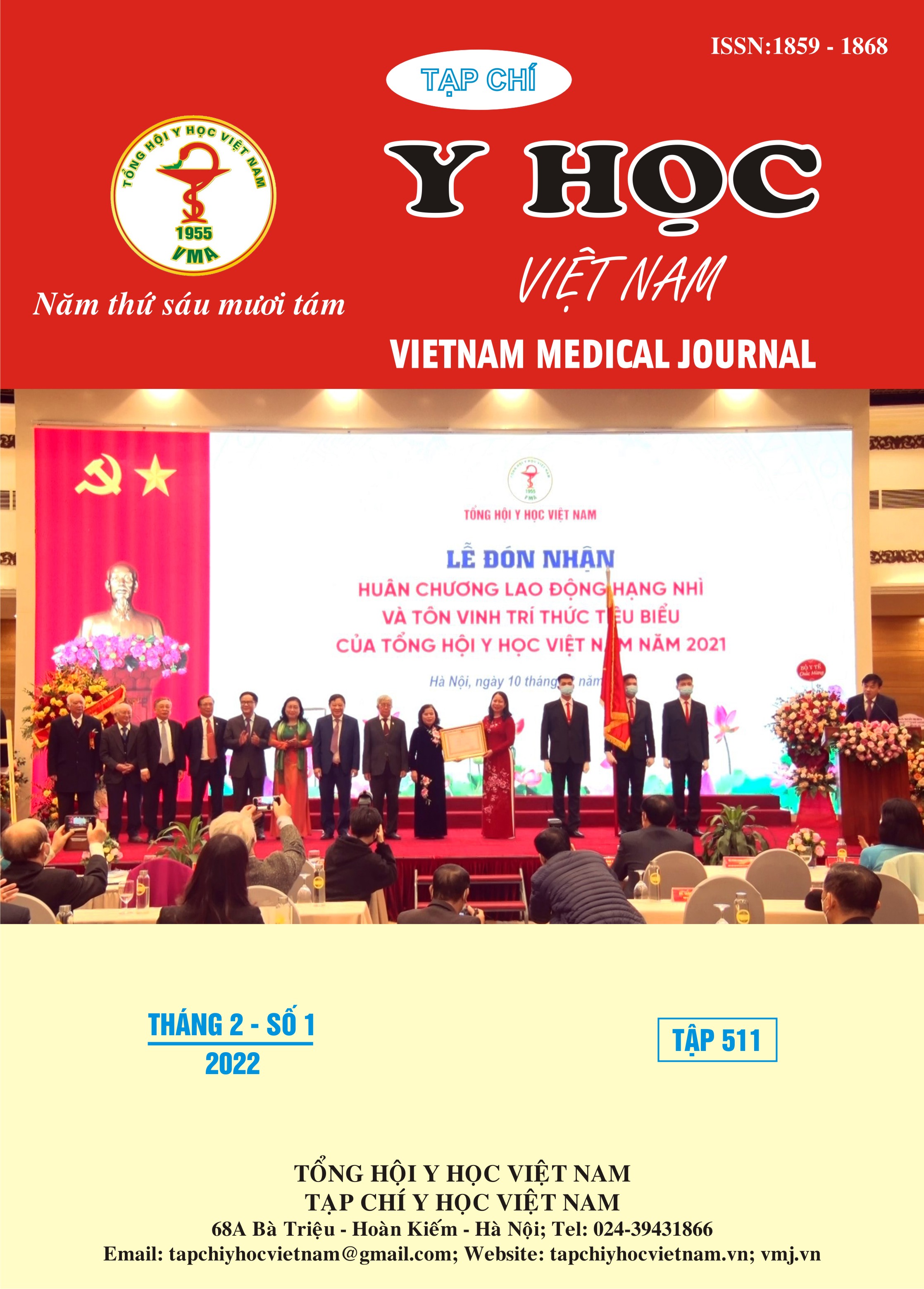SERUM PROCALCITONIN CONCENTRATION AND RELATIONSHIP WITH BLOOD CULTURE RESULTS AT NINH THUAN PROVINCE GENERAL HOSPITAL 2021
Main Article Content
Abstract
Introduction: Procalcitonin (PCT), regarded as a biomarker specific for bacterial infections. Objective: Determination of serum PCT concentration in patients positive blood culture sepsis and describe the relationship between serum PCT concentration with isolated bacteria. Subjects and Methods: Descriptive cross-sectional study on 480 patients diagnosed with sepsis, at Ninh Thuan province general hospital from January-September 2021. Results: Median serum PCT concentration in the positive blood culture group (15.6 ng/ml), higher than in the negative blood culture group (p<0.05). The area under the curve was 0.83 (p<0.001) high or low PCT concentrations were able to identify positive blood culture sepsis with a cut-off of 0.4 ng/ml with a sensitivity of 80% and a specificity of 93%. The median serum PCT concentration of the gram-negative bacteria group (32.6ng/ml) was higher than that of the gram-positive group (p<0.05). Conclusions: PCT can distinguish positive blood culture sepsis, as well as between different bacterial species.
Article Details
Keywords
Sepsis, Procalcitonin, Positive blood culture
References
2. Bùi Thị Hồng Châu, Lê Xuân Trường, Trần Quang Bính và cộng sự (2010), “Giá trị của xét nghiệm Procalcitonin trong chẩn đoán nhiễm trùng huyết”, Y học TP.HCM, 14(1), 476–479.
3. Trần Thị Thanh Nga, Nguyễn Thanh Bảo, Cao Minh Nga (2015), “Tác nhân vi khuẩn gây nhiễm khuẩn huyết và sự đề kháng kháng sinh tại khoa Hồi sức cấp cứu Bệnh viện Chợ Rẫy”, Y học Thành phố Hồ Chí Minh, 19(1), 414-420.
4. Nguyễn Việt Phương, Nguyễn Minh Hải, Nguyễn Văn Dương và cộng sự (2017), “Nghiên cứu giá trị chẩn đoán của PCT ở bệnh nhân nhiễm khuẩn huyết”, Tạp chí Y Dược học Quân sự, 6-2017, 79-84.
5. Meisner. M (2014), “Update on procalcitonin measurements”, Annals of laboratory medicine, 34(4), 263-273.
6. Opota. O., Croxatto A., Prod'hom G., et al. (2015), “Blood culture-based diagnosis of bacteraemia: state of the art”, Clinical Microbiology and Infection, 21(4), 313-322.
7. Rudd K.E., Johnson S. C., Agesa K. M., et al (2020), “Global, regional, and national sepsis incidence and mortality, 1990–2017: analysis for the Global Burden of Disease Study”, The Lancet, 395(10219), 200-211.
8. Le Huy Thach., Phan Hung Viet., Le Van Thanh., et al (2021), “Study clinical, paraclinical features and the outcome of treatment for neonatal infections in early period at Ninh Thuan provincial general hospital”, Journal Of Functional Ventilation And Pulmonology, 37(12), 26-32.
9. Yan S.T., Sun L. C., Jia H. B., et al (2017), “Procalcitonin levels in bloodstream infections caused by different sources and species of bacteria”, American journal of emergency medicine, 35(4), 579-583.
10. Yunus I., Fasih A., and Wang Y. (2018), “The use of procalcitonin in the determination of severity of sepsis, patient outcomes and infection characteristics”, PloS one, 13(1), e020652.


